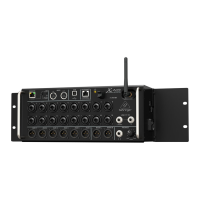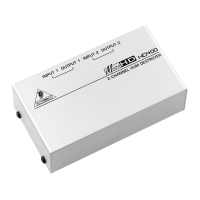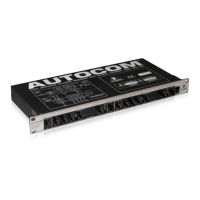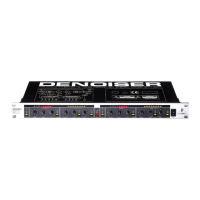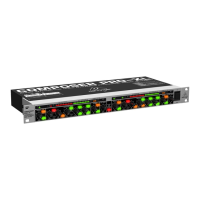28 RD-8 MKII User Manual
Output: The signal sent out by a device or process. Also used to describe the
physical socket where a signal leaves a device.
Parameter: A setting whose value can be changed. The result is a sweeping
eect similar to a anger but smoother and often more natural sounding.
Pattern: A rhythmic pattern, or repeated rhythm establishing the meter and
groove through the pulse and subdivision
Pitch: A quality of sound that makes it possible to judge if a sound is higher or
lower than another.
Playhead: A moving white LED in the step timeline that represents the position
in the pattern.
Polymeter (Poly): The simultaneous use of two or more conicting rhythms.
Post: The point for accessing audio just after it leaves a specic component or
stage. For example, Post-Fader audio is aected by the fader.
Power Supply Unit (PSU): The component in a system which is responsible for
supplying and managing power.
PPQ: The smallest unit of time used for sequencing note and automation events,
both by step sequencers and in the MIDI standard.
Pre: The point for accessing audio just before it reaches a specic component or
stage. For example, Pre-Fader audio is not aected by the fader.
Probability (Prob): The extent to which a programmed step is likely to happen.
Random: Does not follow a denite plan or pattern.
Resonance: The emphasis/boost of frequencies around the cut-o point just
before attenuation starts to occur. As resonance increases, it will reach a point
where the lter will start to self-oscillate, producing a signal even when there is
no input.
Return: A way to add audio into the signal path after the FX bus.
Send: Select which sounds are sent to the FX bus for further processing.
Sequencer: A programmable device or module used to arrange/sequence timed
events into musical patterns and songs.
Sig (Signal): Shows presence of audio.
Step: A step is one stage in a sequence or pattern.
Solo: To isolate a chosen voice in playback.
Song: A collection of patterns played back in a predened order.
Sub-Bass: Frequencies in a signal ranging from 10 Hz to 60 Hz (lower than C0 to
approximately B1).
Sustain: acts in a similar way to a compressor, allowing the peaks to carry
longer before decay. The eect can also be used to reduce the sustain for a more
staccato sound.
Swing: The Swing function as we now know it – originally known as ‘shue’, a
term still used to approximate the eect of a human drummer playing in swing
timing by quantizing each drum beat to the nearest step and then delaying the
playback of every other step in the pattern.
Synchronization (Sync): Coordination of timing between devices.
Sync (Tempo): A function where a cyclical event such as an LFO is synchronized
to a tempo value.
Tap: A way to enter step information.
Tempo: The speed at which a composition is played, usually expressed in beats
per minute (BPM).
Timbre: The tone, character, or aesthetic qualities of a sound.
Treble: Frequencies in a signal ranging from 5 kHz to 20 kHz (approximately D#8
to above C10).
Trigger: Activation of a function, such as the Note Repeat or Step Repeat.
Unbalanced Audio: A type of audio connection that uses two wires in a cable
and does not oer the noise rejection qualities of a balanced system.
Universal Serial Bus (USB): A plug and play interface that provides a fast
connection between a computer and peripherals.
Volt (V): A unit of electrical potential dierential or electromotive force.
A dierence in charge between two points in a circuit. This dierence, when
combined with the rate of the charge (current) allows for the control of many
analog circuits that synthesize sound.
Voice: A sound which can play a single note at a time.
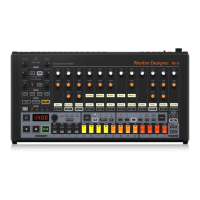
